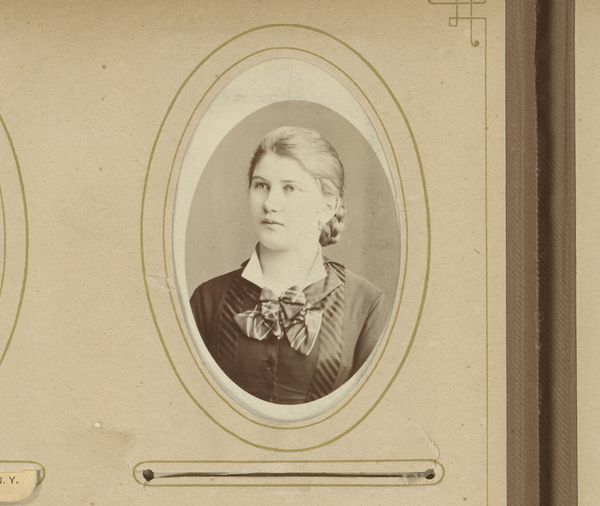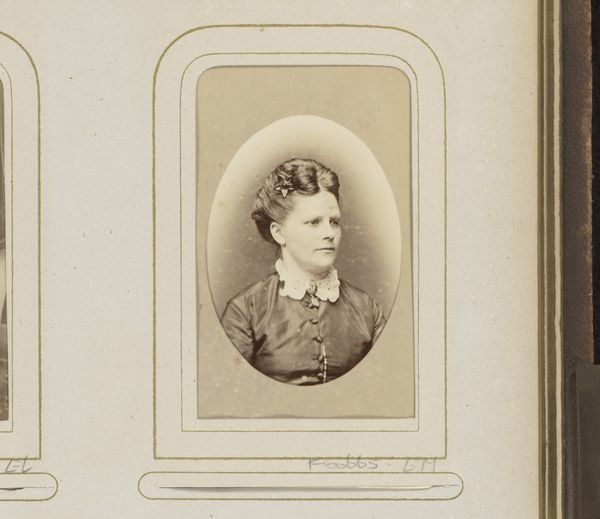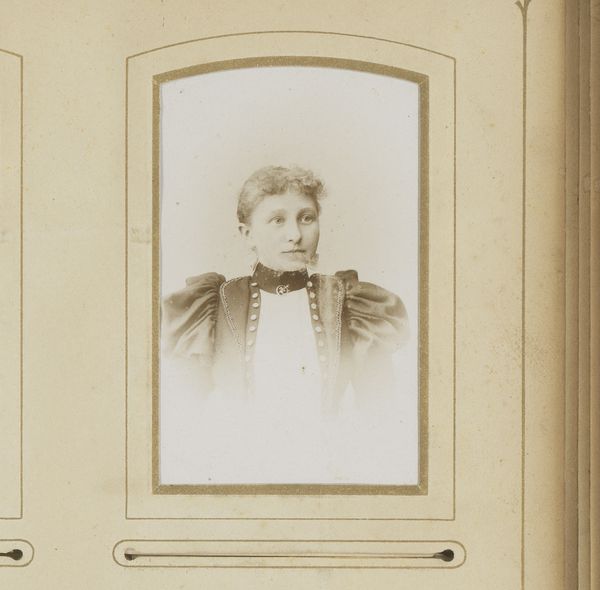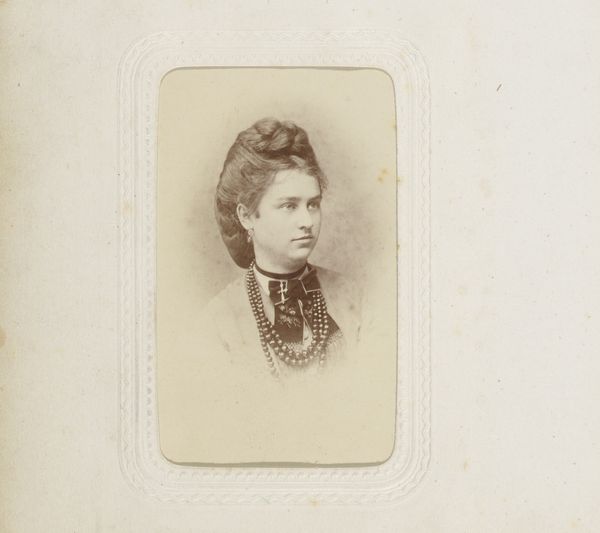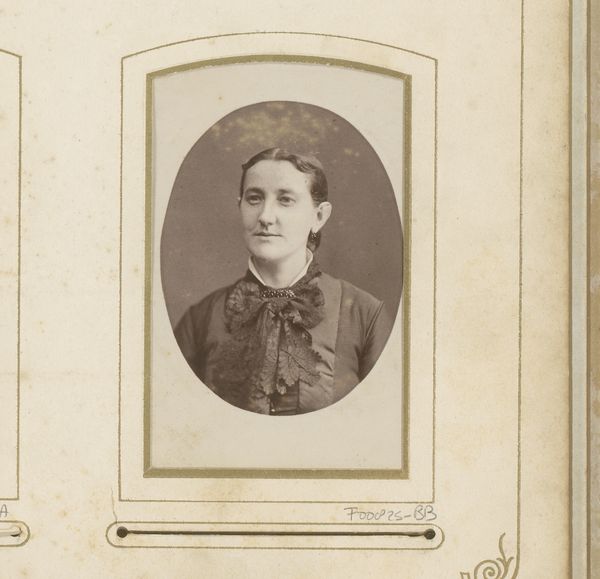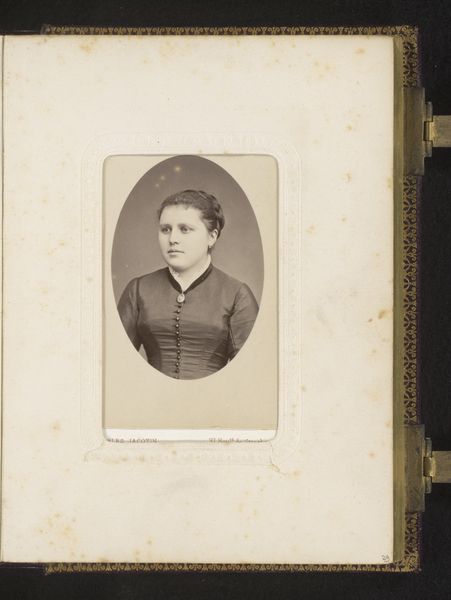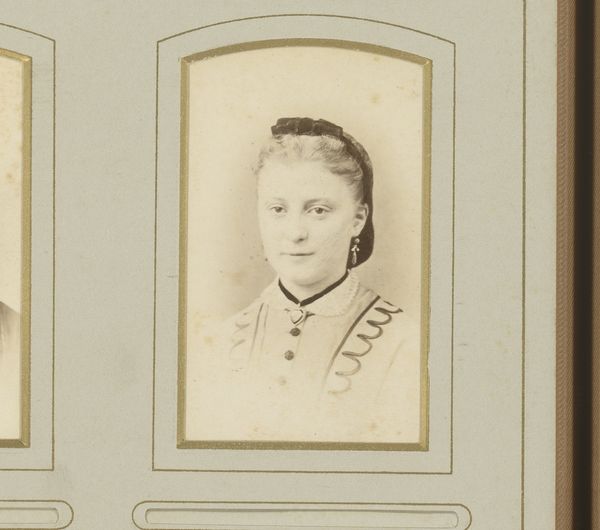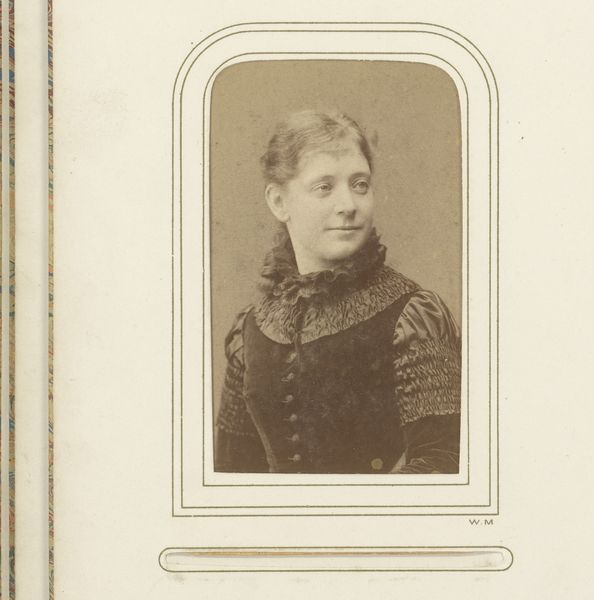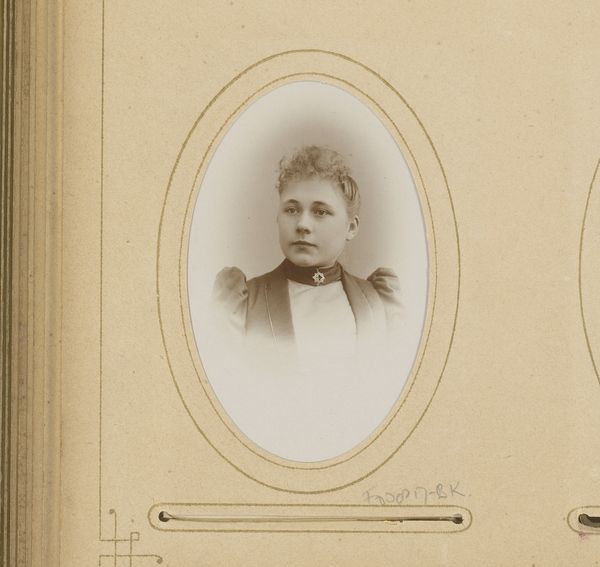
photography
#
portrait
#
photography
#
realism
Dimensions: height 82 mm, width 51 mm
Copyright: Rijks Museum: Open Domain
Curator: Right, so, this is a photographic portrait, believed to be created by Theodor Bässler sometime between 1860 and 1900. The artwork, known as "Portret van een jonge vrouw met halsketting"—that's "Portrait of a Young Woman with Necklace" to you and me— showcases an oval sepia print of a young woman. Editor: My first thought is one of melancholy, I'd say the overall tone is a soft yet insistent sadness. Something about her direct gaze combined with the faded quality of the photograph evokes a profound sense of nostalgia for a time and person I've never known. Curator: Interesting. I see a certain strength in that gaze too. The simplicity of the composition, almost clinical in its realism, serves to highlight the individual. And those details, like the frilled neckline and the delicate pearls...they feel very telling. Editor: Oh, absolutely, and those details speak volumes about social standing and perhaps the restrictions placed upon women of her era. We’re talking about a time steeped in Victorian ideals. Those pearls aren’t just an accessory, they're a marker. A carefully curated symbol. Curator: Right. Photography at this time was gaining prominence, becoming increasingly accessible, which opened up portraiture to the rising middle class. Suddenly, you didn’t have to be nobility to have your likeness captured. Do you think there’s anything radical about how she's portrayed? Editor: Radical? Perhaps not overtly. However, the very act of a woman existing in the public sphere—even through a photograph—could be seen as a subtle act of defiance against the Victorian expectations of domesticity and subservience. It’s a form of claiming space and visibility. It says: "I am here, I exist." Curator: It's strange how, through something as ostensibly simple as a portrait, one can catch glimpses of rebellion and constraint coexisting, isn't it? The formal pose, the restrained clothing... yet that defiant gaze pierces through it all. It's the tension between the presentation and what lies beneath that fascinates. Editor: Absolutely, and perhaps it's that very tension—the push and pull between societal expectations and individual identity—that allows this seemingly simple portrait to speak so powerfully to us across the ages. It resonates even now, in an era of filtered selfies, as an assertion of presence in the face of often oppressive expectations.
Comments
No comments
Be the first to comment and join the conversation on the ultimate creative platform.
